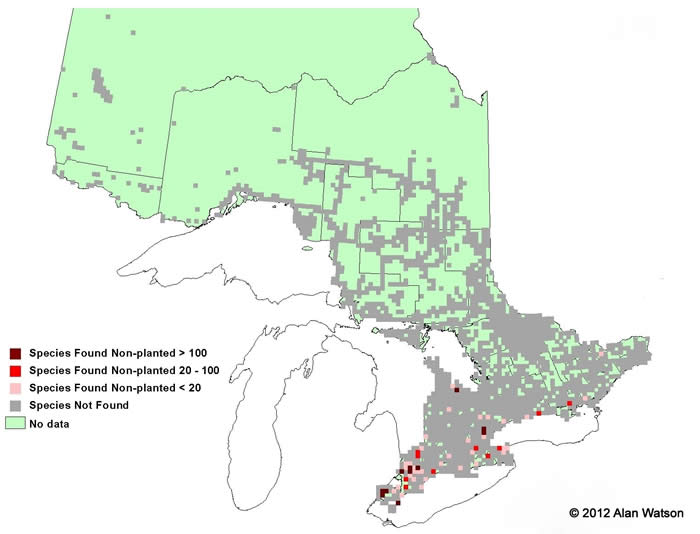Honey-Locust - Gleditsia triacanthos
Also known as “Thorny Locust”, this tree is identifiable by long (up to 30cm), branched thorns on the trunk and limbs. Thornless individuals (variety inermis can also be found quite regularly). Honey-locust is rare to find growing wild in Ontario, but it is a common garden species, as many gardeners enjoy the protective hedges these trees will form when pruned. Its unique, twisted pods lend this thorny tree its name because they contain a substance that tastes like a combination of honey and castor oil. These seeds and pods provide food for many species such as white-tailed deer, squirrels and quail, and have even been used to make beer!
The seed pods of the honey locust become ripe in the winter when they are hard and leathery, and are crisp and green in the summer – even domesticated animals such as cattle enjoy these pods.
Spines grow from trunks and branches, often bark profusely covered. The young bark is dark gray and smooth, while older trunks have bark that has large ridges and is peeling from its sides.
The leaves of the Honey-Locust are alternate and compound, and are usually twice-pinnately divided with 4-7 pairs of branches on the main stalk.

Ontario Tree Atlas map of non-planted Honey-Locust. 1995-1999.
References
Farrar, J.L.. 1995. Trees in Canada. Fitzhenry & Whiteside Ltd. Toronto. ON. 504 pp.
Kershaw, L. 2001. Trees in Ontario: Including tall shrubs. Lone Pine Publishing. Edmonton. AB. 240 pp
Muma, W. 2011. Ontario Trees and Shrubs. [Online] Available: www.ontariotrees.com
OMNR, 2011. Ontario Ministry of Natural Resources: Ontario Tree Atlas. [Online] Available: http://www.mnr.gov.on.ca/en/Business/ClimateChange/2ColumnSubPage/267027.html
OMNR, 2008. Ontario’s Biodiversity: Species at Risk.